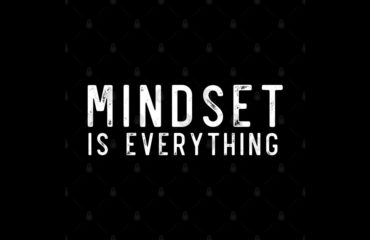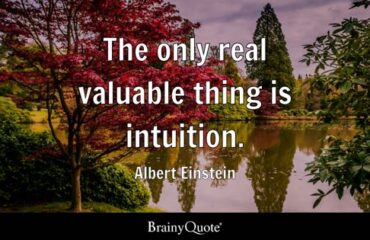
We would have very often seen in today’s social media world where some people who are in person very quiet being very aggressive and argumentative particularly in WhatsApp groups.
We would also have noticed how with very close friends and relatives when we have difference of opinions, and we get into an argument we very often end up with topics which are very often so diverse from what we started out with.
Sometimes during negotiations also, we get stuck in very critical negotiations without really having a clue why it is getting stuck.
Before we get into details on how we can overcome the same let’s look at how as humans we are programmed and why we really get angry and at times the anger gets diffused at the same speed as it had come up or how some people are able to diffuse our anger faster than others are able to even though these people wouldn’t have offered any solution to the ager at that point in time.
In a brain imaging study, which was done by the University of California it was found that when people are shown photos of faces with strong emotion the brain shows greater activity in the part of the brain called amygdala, the part of the brain which creates fear. When these same people were asked to identify and label the cause of the fear the brain activity moved to the area which governs rational thinking. In other words what this experiment found was that by just applying rational words to label a fear or explain the fear it reduced the intensity of the fear and hence the emotion.
It was also found that the faster that we can interrupt the brains (amygdala’s) real and imaginary threats the faster we can clear the road of obstacles and the quicker we can generate a feeling of safety, wellbeing, and trust.
Before we go any further, we also need to understand that all of us carry fears upon fears. In fact, I was just recollecting my younger daughter was on a college tour last week and was near the Himalayan belt. She kept telling us about the layers and layers of clothes that she was wearing to keep out the cold. For all of us who are used to being in places where the winters are very cold, we are used to wearing layers and layers of clothes to keep out the cold but for her it was something new and fearful.
Our mental makeup is also similarly conditioned with layers and layers of fears which are at times based on our past experiences or at times based on what our minds have been conditioned to.
Such situations always turn up in Negotiations also whether they are personal or professional where fear becomes a key factor which is derailing the discussions or negotiations.
The technique by which we are able to employ our tactical empathy by recognizing and then verbalizing the predictable emotions of the situation at hand and then respectfully repeated back the emotion back to the other person is what is called as Labelling.
Labelling is a way of validating someone’s emotion by acknowledging it. In labelling we give the persons emotion a name and you show your understanding to how that person feels.
We often use external topics during the conversation to build connect with the other person and to help develop an intimacy with the other person. We can look at labelling as a shortcut to intimacy, a shortcut to building intimacy and connect with the other person.
Labelling can be used to both reinforce a good aspect of a negotiation or to diffuse a negative one.
The various steps in carrying out labelling are as follows:
- Detect the person’s emotional state.
No person particularly in a negotiation will ever tell you what their emotional state is. But there is a wealth of information that is available from the other persons words, tone, and body language. This combination of words, tone and body language is often called the trinity in understanding the emotional state of the other person.
2. Reinforce the understanding of the emotional state by asking relevant questions and not only listening to their answers but by also observing their body actions. There was this interesting point from Andre Agassi biography which talks about how even with the best of professionals we can make out what’s going on in their minds by observing their body actions.
3.. Once you have spotted an emotion the next step is to label that emotion loudly. Labels can be phrased as statements or questions. The only difference between the two is how you end the sentence whether in a downward or upward inflection.
4. Labelling is more effective when the questions created are more neutral in nature
5. Once the Labelling has been done, please stay quiet and listen. Most of us tend to elaborate on what we said, which reduces the effectiveness of the labelling. So, stay quiet and listen.
Labelling what we discussed above is just a tactic to help understand the other persons actual needs and fears and not the ones that are demanded or stated to arrive at the best possible solution or outcome. What good negotiators do while practicing the same in negotiations is diffusing the negativity if any while also reenforcing the positives. Research has also shown that the best way to handle negativity is to observe it without reaction and without judgement. Then consciously label each negative feeling and replace the same with positive compassionate and solution-based thoughts as we saw in the experiment that I quoted at the beginning of the article.
Labels are found to be very powerful and potentially transformative to the state of any conversation. By digging beneath the data, stands, details and logistics labels help to uncover and identify the primary emotion driving almost all of our counterpart’s behaviour. Once this emotion is acknowledged and labelled it seems to miraculously solve all other bottlenecks.
To continue learning and understanding more about the techniques like labelling which will help us not only in our day to day personal and professional conversations but also in very tricky and difficult negotiations do subscribe to my LinkedIn newsletter Rejo’s Biz Bytes and visit my website www.rejofrancis.com.




How interesting to note that professionally and personally , once you are minful and aware of the root cause of your emotion , tensions can be diffused.